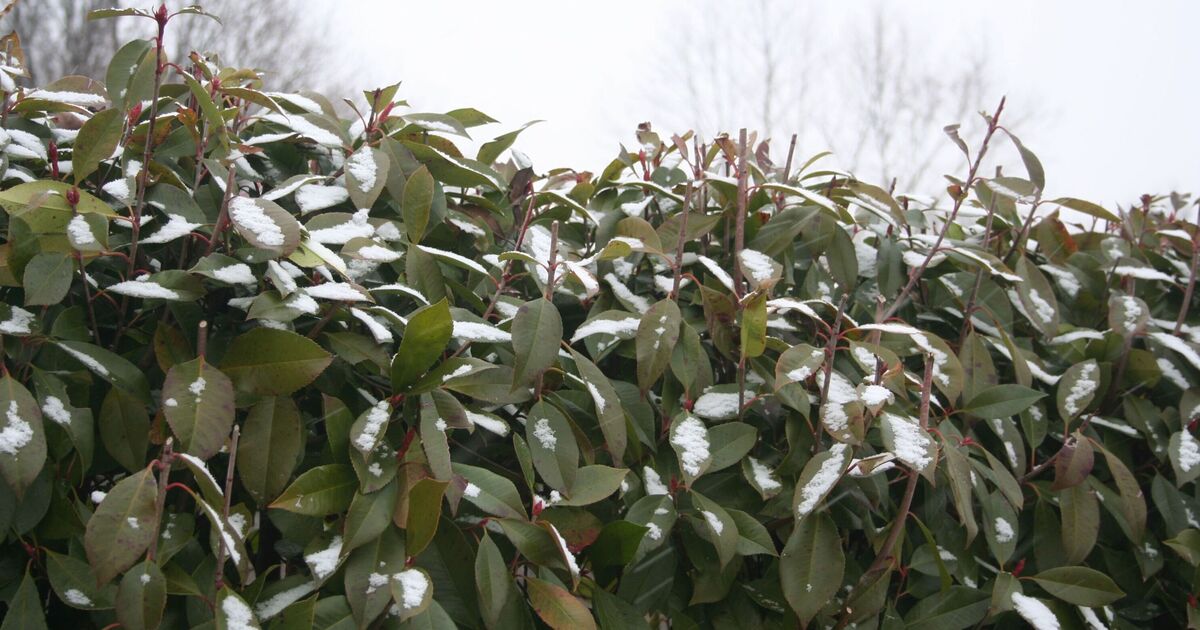February is a month when gardens start to come back to life after a long winter and the first signs of the new season start to appear.
While spring may still be another month away yet, there is plenty to do in the garden to prepare, with pruning and tidying being the key jobs this month.
But households with hedges in their gardens are being warned not to prune certain types right now, as temperatures are forecast to plummet.
The Met Office says a high pressure weather system will bring cold winds, snow and freezing conditions to the UK this weekend, with temperatures forecast to drop as low as -7C in some areas.
A yellow cold health alert is in force across parts of northern and south east England from 9am on Friday until 9am on Tuesday, with people being warned to brace for sub-zero temperatures, with a chance of snow, ice and frost.
The chilly climes spell bad news for some evergreen shrubs and hedges as these plants don’t respond well to pruning in frosty conditions.
As such, gardeners are warned to avoid pruning these plants – particularly if they aren’t well established – until mid-spring as they react better to pruning when in active growth.
Jamie Shipley, managing director at Hedges Direct, explains: “For the most part, established evergreen hedges are fairly sturdy and can handle being pruned in the colder months as they tend to be dormant in winter and are less likely to bleed when cut back.
“Just make sure that when you do, it isn’t forecast any frosts in order to minimise the chance of frost damage, which evergreens are more sensitive to.”
The best time to prune evergreen hedges, such as cherry laurel, English yew, common privet and Photinia Red Robin, is in spring, just before they start sprouting new leaves. This will typically occur in late March to early April.
But gardeners are warned to be mindful of cutting hedges in March as this is the bird nesting season and it is an offence under the Wildlife and Countryside Act 1981 to damage or destroy the nest of any wild bird while it is in use or being built. As such, make sure to check there are no nesting birds in your hedges before you start trimming.
The Royal Horticultural Society (RHS) adds: “Evergreen hedges should be renovated in mid-spring, as they respond better to pruning when in active growth and the risk of frost has passed.
“Before undertaking work on hedges, check that there are no nesting birds in the hedge, as it is an offence under the Wildlife & Countryside Act 1981 to damage or destroy the nest of any wild bird while it is in use or being built.
“Where drastic renovation is necessary – i.e. more than 50% reduction in height or width – it is better to stage this gradually over two or three years.”












